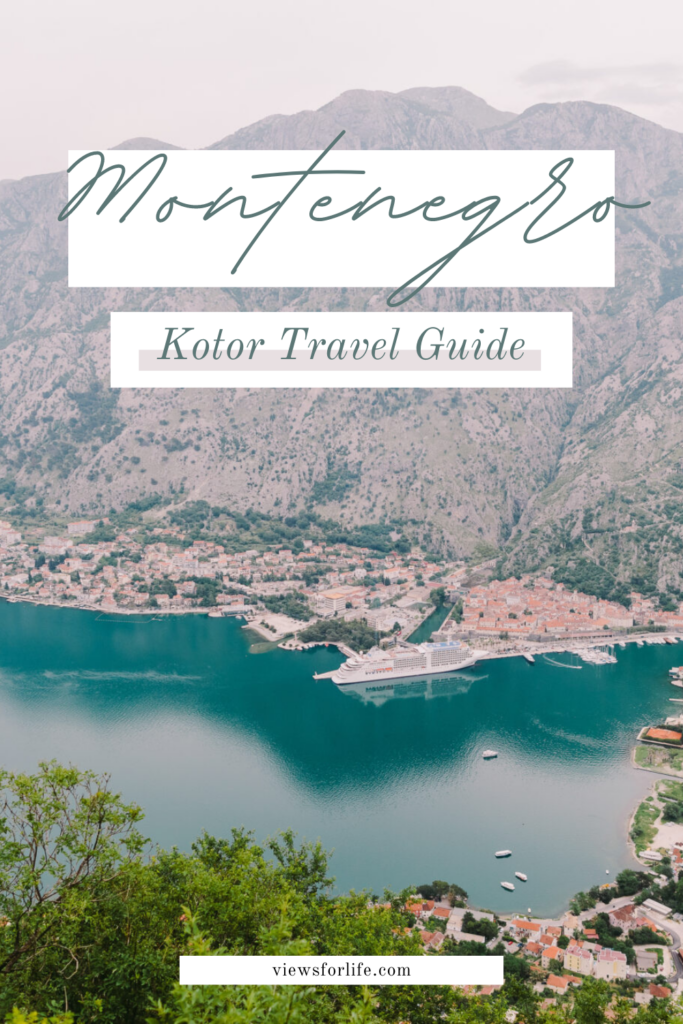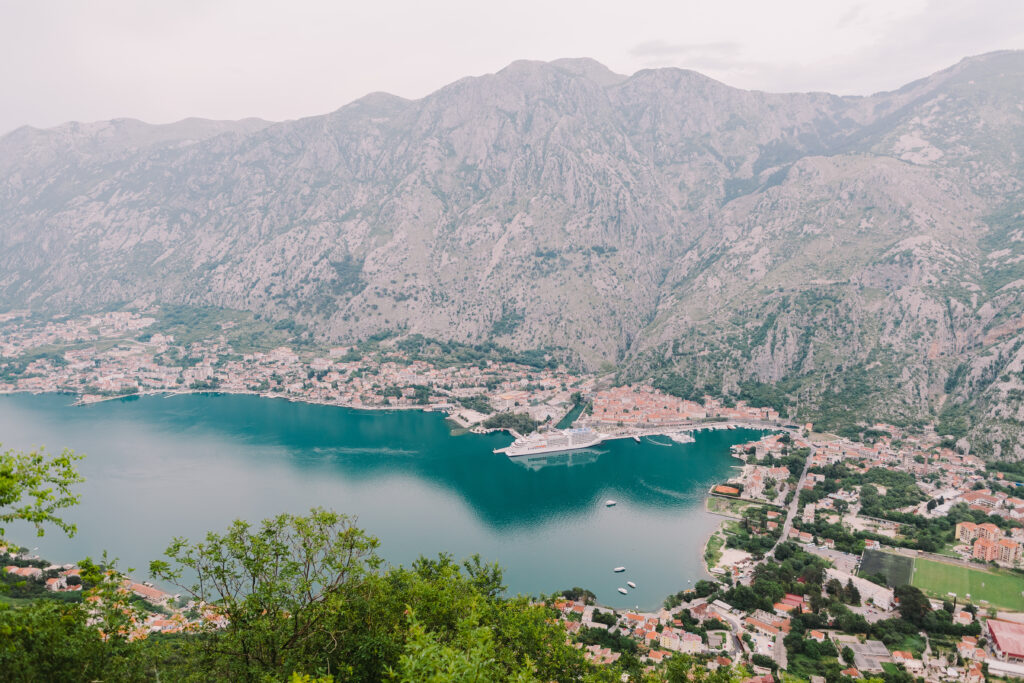Is Kotor, Montenegro worth it? – Kotor City Guide
October 7, 2022
I visited Kotor this summer and spent an amazing five days. It’s a hidden gem and an underrated destination that boosts ancient history and magnificent beauty.
Kotor, a best-preserved coastal town in Montenegro, is the administrative center of Kotor Municipality. Situated in the secluded part of the Bay of Kotor, this city is home to about 13k locals. The charming Medieval Old Town of Kotor and its 16th-century fortification are the main attraction for tourists. It’s well known as the most beautiful city on the Montenegro coast.
Other popular tourist attractions include the Church of Our Lady of the Rocks, Katedrala Svetog Tripuna, Kotor Beach, etc. With all this and more, Kotor is an unmissable chunk of any excursion to Montenegro.
Here’s a guide to what you should know about this beautiful town of Kotor!

Kotor, Montenegro City Guide – All You Need To Know
History of Kotor
Being more than 2000 years old, Kotor is an incredible historical place to visit. Many conquerors ruled this city, including the French, the Austrians, the Venetians, the Illyrians, etc. Natural catastrophes, the main earthquakes of 1537, 1563, 1667, 1729, and 1979 have resulted in catastrophic damages, and consequently, the city and its top attractions have been rebuilt several times.

How to Get to Kotor, Montenegro?
The main airport of Kotor, Trivat Airport, is situated 4.9 miles away from the city center and handles primarily regional flights. Most tourists prefer flying into the Podgorica Airport, located in the capital, and then driving to Kotor by car or riding a bus instead. You can opt for whatever suits you best!
The climate of Kotor is the Mediterranean, with mild winters and hot summers. The best time to visit Kotor city is from May to September; however, the tourism conditions are ideal for visiting in early September.
Best Things to Do in Kotor
Kotor, Montenegro, is an ideal travel destination for you if you are looking for a place with less tourist mass. In a 2-3-day tour, you can explore this city; however, a 5-day tour is an ideal span for exploring most of it, from relaxing at beaches, discovering history at historical monuments, admiring splendid architectural landmarks, and lots more.
Wondering how you can explore most of this city and what to do in Kotor, Montenegro? Let’s find out!
Explore the Old Town and Walk along the Old City Walls
Though Kotor, Montenegro, is just 300 by 350 meters, you will be stunned at how many secluded plazas, charming alleys, and hidden gems this city holds! Take your camera and get lost in the streets of Old Town; you will surely fall in love with the city’s charm. Walking along the old city walls is a must! Some of Kotor’s oldest walls were built in the 9th century. Can you estimate how many centuries these walls have witnessed? It’s truly breath talking!
You will find several points to climb on and get a bird’s eye view of the Kotor. The most visited viewpoint which offers scenic views of the city is Kampana Tower. Moreover, the exciting art installations will surely catch your sight, like a dragon made with plastic bottles climbing up the tower.
Or take a guided tour that budget-friendly!
Visit the Church of Our Lady of the Rocks
Our Lady of the Rocks is an artificial island. The main attraction and the largest building on this island is the Roman Catholic church, i.e., the Church of Our Lady of the Rocks. Dating back to the Bronze age, this blue-domed church has an adjoining museum too.
It features 68 paintings by a famous baroque artist – Tripo Kokolja. What tourists find most impressive is the work of Jacinta Kunic, who took 25 years to finish a tapestry of the Holy Virgin and became blind afterward. Inside the church, there’s a marble altar by Antonio Kapelano built in 1796. One of the altars painted by Lovro Dobričević is the icon of the Lady of the Rocks.
Katedrala Svetog Tripuna
The other Roman Catholic church of Kotor and another top tourist attraction, Katedrala Svetog Tripuna, is a must-stop when visiting Kotor. Primarily, the place was occupied by a small church holding the remains of St. Tryphon. Later, the church’s construction started in 1124 and finished in 1166. The cathedral was rebuilt after the disastrous 1667 and 1979 earthquakes. It was most recently rebuilt in 2003.
This UNESCO World Heritage Site is a striking embodiment of Roman architecture. The church features partially preserved frescos from the 14th century, a marble altar by Venetian masters depicting St. Mary, scenes from St. Tryphon’s life, marble pillars, and sculptures. The ticket for entry costs just 3 euros only.
Hook yourself in Adventurous Hiking at “Ladder of Kotor”
Ladder of Kotor – a hiking trail right behind the Old Town zig-zags up the mountain. This trail was once the only route connecting the city with the old royal capital of Cetinje and Njegusi village. The scenic views from this hiking trail across the bay feature the glassy ocean, historic orange-roofed cities, and the rolling mountains beyond.
It takes 3-6 hours to complete this hiking trail’s ascent of 940 meters. Beginning next to the Old Town Kotor, the trail ends at P1 near Restaurant Nevjesta Jadrana. The route from Old Town to the Restaurant Nevjesta Jadrana through this hiking trail is four miles. This rocky trail has over 70 switchbacks.
Try Out Local Food
The flavorsome, fresh, and Mediterranean food is the charm of Kotor. The pizzerias in the Square of Arms and the taverns set in the tiny square of the old city area are great places to visit for budget dining. However, if you want to enjoy a luxury dining experience, head towards Dobrota and explore some of the fantastic restaurants serving delish food with incredible waterfront views.
One of the must-try food this city serves as the Krempita! Its unique recipe passed from generation to generation can be attributed to its utter deliciousness. Whether you are craving a sweet treat or want to try it, it will surely leave you licking your fingers.
Conclusion
This article features all you should do on your visit to the historic city of Kotor. From wandering in Old Town and exploring history at the two major roman Cathedral Churches of the city to enjoying the picturesque views when hiking at Ladder of Kotor, and lots more, this city has plenty to offer!
Discover more destination guides from Europe from my Summer 2022 trip!
Island Hopping in Greece – All You Need to Know
Discover the Cave City of Cappadocia: Travel Guide
Istanbul City Guide – Pack Your Bags and Go!
Leave a Reply
© copyright 2024 Congologie Studios